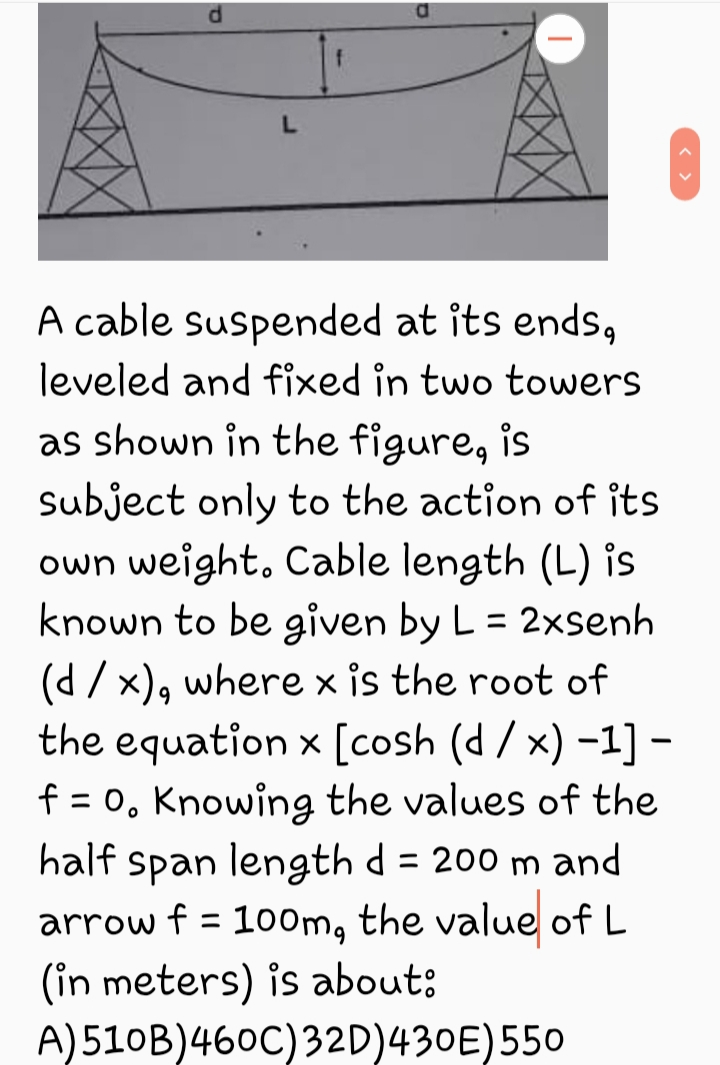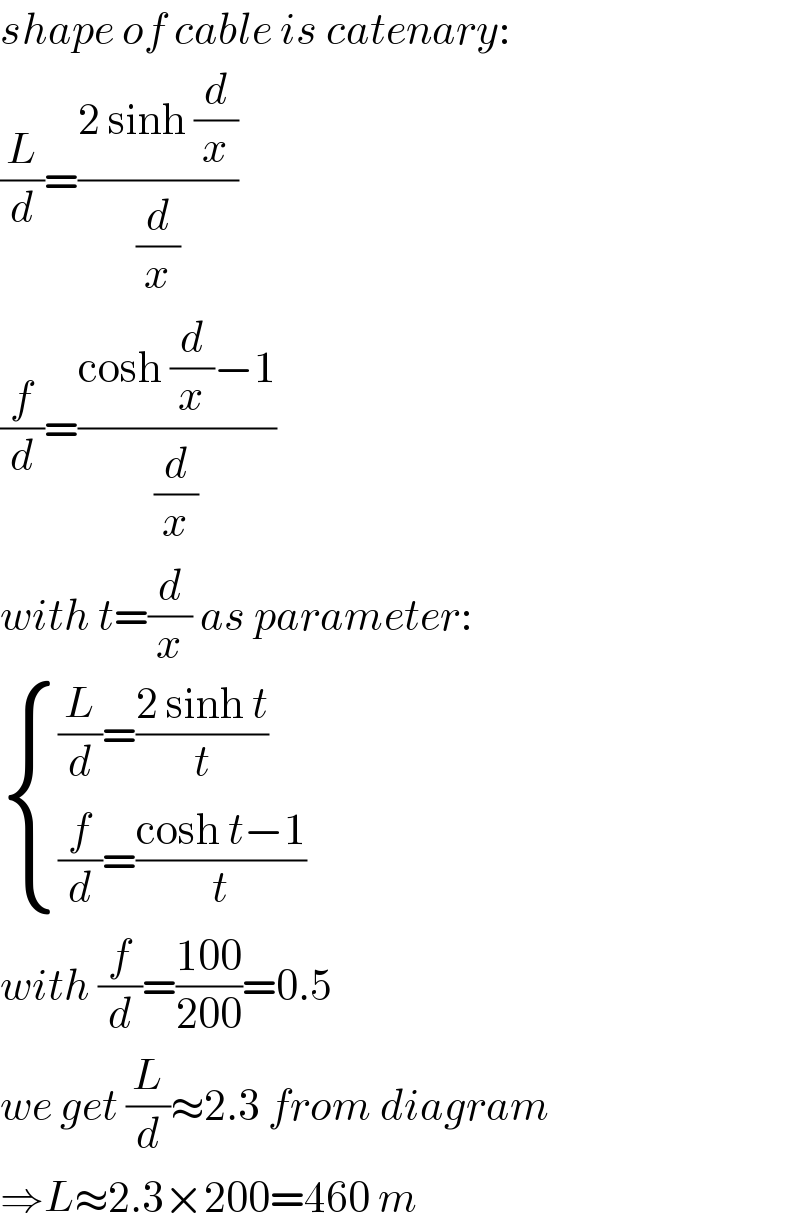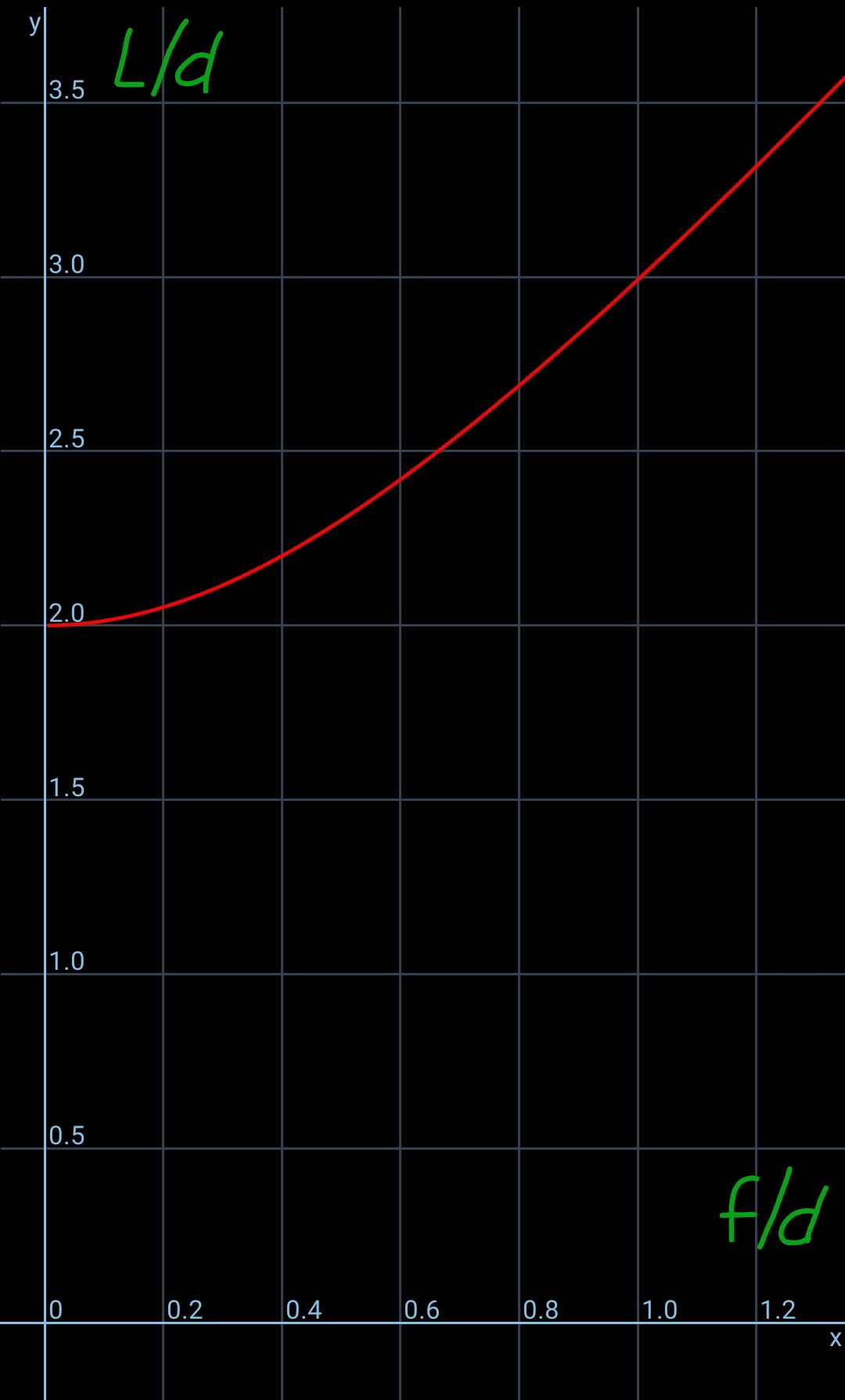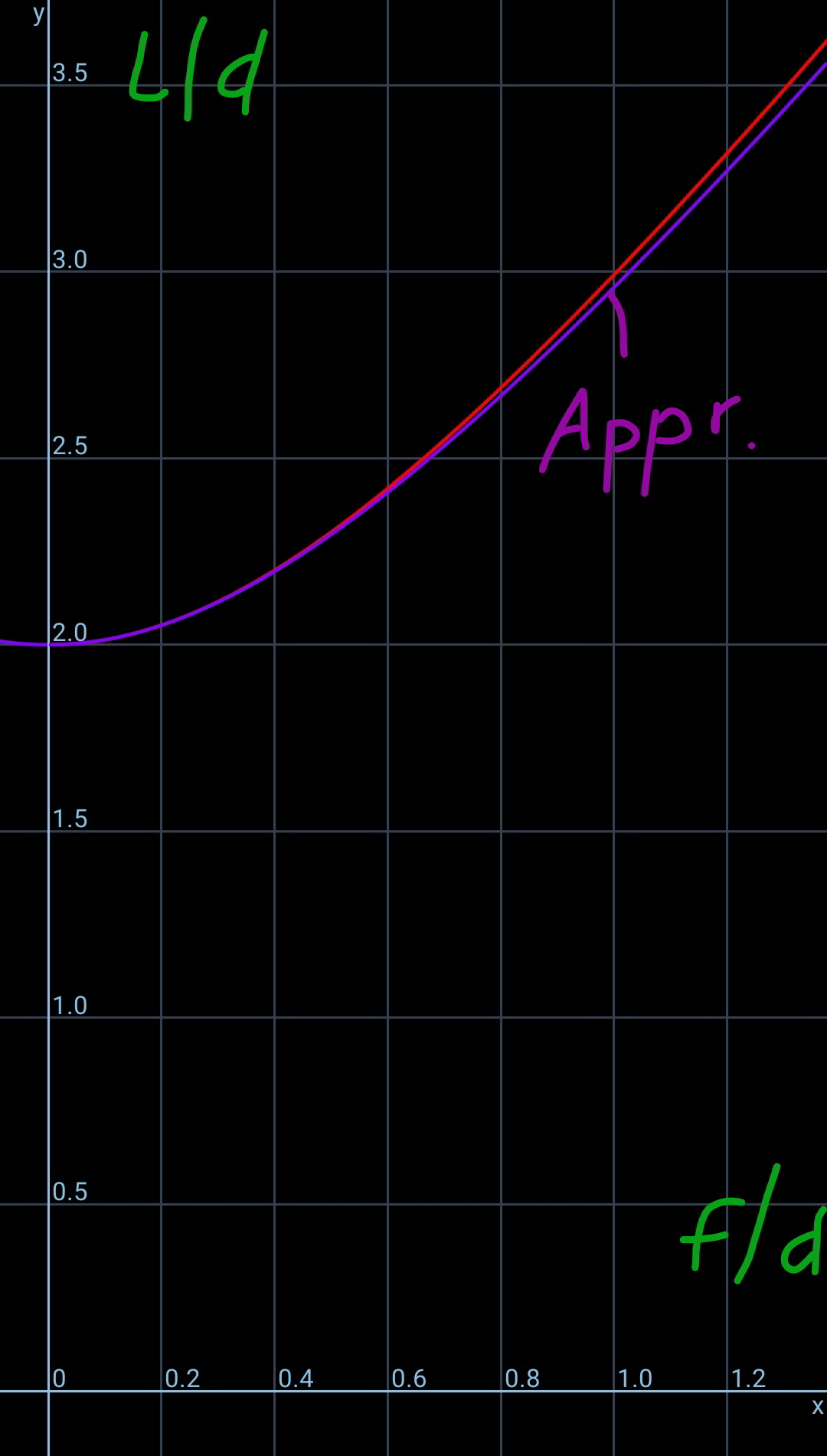
Question and Answers Forum
Question Number 75463 by indalecioneves last updated on 11/Dec/19

Answered by mr W last updated on 12/Dec/19

Commented by mr W last updated on 11/Dec/19

Commented by indalecioneves last updated on 11/Dec/19

Answered by mr W last updated on 11/Dec/19
![Approximation as parabola: y=f((x/d))^2 y′=((2fx)/d^2 ) L=2∫_0 ^d (√(1+(((2fx)/d^2 ))^2 ))dx (L/d)=2∫_0 ^d (√(1+(((2fx)/d^2 ))^2 ))d((x/d)) (L/d)=2∫_0 ^1 (√(1+(((2fu)/d))^2 ))du (L/d)=(d/f)∫_0 ^1 (√(1+(((2fu)/d))^2 ))d(((2fu)/d)) ⇒(L/d)=(1/((2f)/d)){ln [((2f)/d)+(√(1+(((2f)/d))^2 ))]+((2f)/d)(√(1+(((2f)/d))^2 ))} with ((2f)/d)=((2×100)/(200))=1 ⇒(L/d)=ln (1+(√2))+(√2)=2.296 ⇒L=2.296×200≈460 m](Q75471.png)
Commented by mr W last updated on 11/Dec/19

Commented by mr W last updated on 11/Dec/19
![we see the approximation as parabola is exact enough if the cable is flat. the advantage is that we can get L/d directly from f/d using the formula: (L/d)=(1/((2f)/d)){ln [((2f)/d)+(√(1+(((2f)/d))^2 ))]+((2f)/d)(√(1+(((2f)/d))^2 ))}](Q75473.png)
